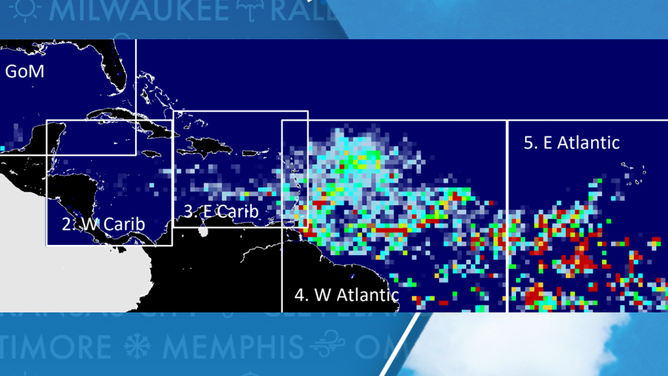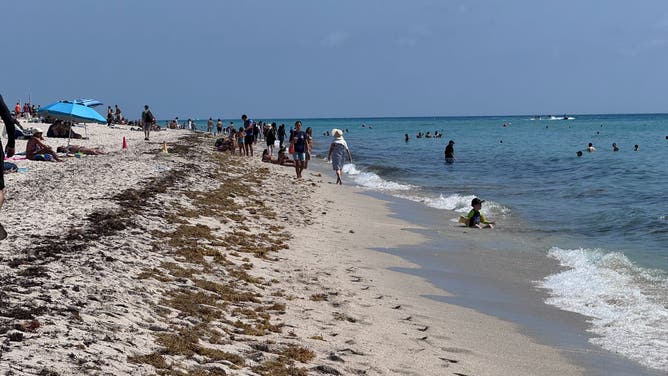Will the annual seaweed invasion threaten Florida beaches in 2024?
In 2023, Florida and other beaches across the Caribbean faced a record-breaking onslaught of Sargassum during the spring and summer. The origins of the Sargassum explosion are somewhat murky, but experts believe fertilizer runoff and deforestation in South America may be primary sources.
University of South Florida tracking sargassum seaweed using NASA/NOAA satellites
While the seaweed isn't harmful, it's unattractive for residents and visitors to the beach and can leave a stench if left untouched.
MIAMI – After a record-breaking season of Sargassum throughout the Atlantic basin, experts at the University of South Florida believe that the seaweed may not be as impactful this year as compared to past episodes.
During its regular monthly update, researchers said Sargassum in the Atlantic had decreased from about 9 million metric tons in February to only about 6.5 million metric tons in March.
While the decline in seaweed was unusual, forecasters still expect significant amounts to enter the Caribbean and impact communities downstream of what is known as the Great Atlantic Sargassum Belt.
"We interpret the February-March decline as an unusual anomaly and expect increased Sargassum amounts in the central Atlantic and particularly in the eastern Caribbean Sea over the next few months. By late April or early May, the coastal regions in the western Caribbean Sea may receive small to moderate amounts of Sargassum. The southeast coast of Florida (including the Florida Keys), however, will be largely free of Sargassum until late May," USF experts stated.

Extent of Sargassum across the Atlantic as of April 1
(USF / FOX Weather)
A LOOK AT A PHENOMENON THAT COULD DERAIL AN ACTIVE HURRICANE SEASON
In 2023, Florida and other beaches across the Caribbean faced a record-breaking onslaught of Sargassum during the spring and summer.
Satellites estimated the algae to be in the neighborhood of 13 metric tons, around double the amount detected this year.
The exact origin of the then-5,000-mile stretch of seaweed was somewhat unknown, with experts pointing to fertilizer runoff and deforestation in South America as potentially being leading causes.
Despite the apparent downward trend, the third month of the year still finished in the top 25th percentile of all Marches.
If the mounds of seaweed were to reach U.S. beaches, experts estimate it would be at least May before the Florida Keys would see widespread reports and likely later into June for the Florida Peninsula.

Seaweed along beach in Miami on April 20
(FOX Weather)
FLORIDA RESEARCHERS DEVELOPING SYSTEM TO FORECAST WHERE SMELLY SARGASSUM SEAWEED IS HEADED
While the seaweed might look unpleasant and produce an odor, the Florida Health Department says it is largely non-harmful to humans.
Tiny creatures that are known to bury in globs can produce rashes and blisters if contact is made with the skin.
For some species of marine life, the brown algae is considered to be helpful, and biologists believe that the buildup provides food and refuge for small fish, crabs, shrimp and other organisms.
